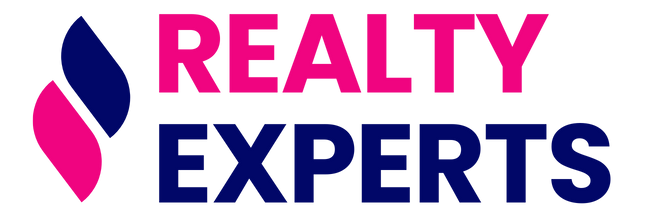Strategic Financial Planning for Career Changers: Pathways, Preparation, and Success

Photo by Katie Harp on Unsplash
Introduction
Changing careers is a significant life event that often requires careful financial planning, especially when moving into fields like financial planning or wealth management. The transition can involve not only the acquisition of new skills and credentials but also managing the financial impact of income changes, education costs, and the timing of your move. This guide provides a comprehensive roadmap for career changers, with actionable strategies and verified pathways to success.
Understanding the Financial Planning Profession
Financial planning is a dynamic profession that offers long-term growth, personal fulfillment, and the opportunity to impact clients’ lives positively. The field encompasses a range of career tracks, from entry-level analyst or paraplanner roles to lead advisor and partner positions. According to the CFP Board , candidates can enter through various points depending on their background and ambitions, and each track requires different skills and credentials [3] .
Assessing Your Readiness for a Career Change
Before making the leap, conduct in-depth research on the financial planning industry. Evaluate your current skills, interests, and long-term goals. Resources such as industry blogs, webinars, and reports can help clarify job expectations, required skills, and typical career trajectories [1] .
Consider the timing of your transition, especially if you may face periods of reduced income. Map out your current financial situation, including savings, debts, and ongoing expenses, to identify any gaps that need to be addressed before or during your career change.
Gaining Relevant Education and Credentials
Most financial planners start with at least a bachelor’s degree in a related field. Obtaining professional certifications-especially the Certified Financial Planner (CFP) designation-can be crucial for credibility and career growth. The CFP Board provides official guidance on the education and certification process, including accredited programs and exam requirements [3] .
Education costs vary widely. Some firms may offer tuition reimbursement or sponsorship for promising candidates, so it’s advisable to ask about these options during interviews or when networking with professionals in the field. If self-funding, create a dedicated budget for tuition, exam fees, and study materials, and explore scholarship opportunities through accredited universities or professional associations.
Acquiring Practical Experience
Hands-on experience is essential for building competence in financial planning. Seek entry-level roles, internships, or volunteer opportunities in financial firms to familiarize yourself with the industry’s workflow. According to Indeed, even part-time or project-based work can help you develop marketable skills, build a client base, and maintain income security during your transition [1] .
Career changers can also consider firm operations or paraplanner roles, which offer exposure to business processes and client management. These positions often involve tasks such as preparing financial reports, assisting advisors, and learning the core technologies used in financial planning [2] .
Networking and Professional Development
Building a professional network is critical for accessing job opportunities, mentorship, and industry insights. Attend industry conferences, join professional organizations like the Financial Planning Association (FPA), and participate in online forums to connect with established planners. Networking can also reveal hidden job opportunities and give you access to diverse perspectives on career paths [1] .
Mentorship programs are available through many professional associations and firms. These programs can help you navigate challenges, understand best practices, and accelerate your growth in the field.
Managing Income Shifts and Financial Risks
Career changers often face income cliffs-periods of reduced earnings-when transitioning into entry-level financial planning roles or starting an independent practice. To manage this risk, create an emergency fund that can cover at least six months of living expenses. Consider transitioning gradually by working part-time or consulting in your current field while building experience in financial planning [2] .
Analyze the compensation structures for various financial planning roles. Entry-level positions may offer salaries ranging from $40,000 to $60,000 depending on location and firm size, while senior advisors and partners can earn significantly higher incomes based on performance and client base. For the most up-to-date salary data, consult verified sources such as the Bureau of Labor Statistics and compensation studies published by professional associations.
Alternative Pathways and Transition Strategies
Not every career change needs to be abrupt. Some professionals begin by taking on freelance projects, consulting, or working in firm operations before moving into client-facing roles. This approach allows you to gain industry knowledge and credentials while maintaining some income stability [2] .
If you’re unsure which path to pursue, explore the five rungs of the financial planner career ladder-Analyst, Associate Advisor, Service Advisor, Lead Advisor, and Partner-outlined in the CFP Board’s workforce development guide. Each rung requires increasing levels of responsibility, experience, and skill development [5] .
Accessing Resources and Support Services
To find financial planning job opportunities, use established career platforms such as Indeed, LinkedIn, and the CFP Board’s official job board. For official guidance on certification and education, refer to the CFP Board’s website and the Financial Planning Association.
If you need personalized advice, consider contacting professional coaches or consulting firms that specialize in financial planning career transitions. For example, Jumpstart Coaching Lab offers coaching and courses tailored to aspiring wealth management professionals [4] . Always verify the credentials and client reviews of any coaching service before enrolling.
When searching for financial assistance or scholarship programs, use official university websites, professional associations, and verified government agencies. If you’re interested in government financial aid, visit the official websites of the Department of Education or relevant state agencies. Avoid any site or offer that cannot be verified as legitimate.
Common Challenges and Solutions
Career changers frequently encounter misconceptions about the financial planning profession. Many underestimate the technical skills required, the importance of professional designations, or the need for mastery of firm operations and technology [4] . Address these gaps by pursuing targeted education, seeking mentorship, and gaining practical experience before attempting to secure a client-facing role.

Photo by KASONGO BULOBO on Unsplash
Another challenge is the risk of starting from scratch when moving from a firm employee role to independent practice. To mitigate this, focus on building transferable skills, expanding your network, and understanding employer policies regarding client retention. Consider alternative pathways such as operations or paraplanner roles to gain confidence and technical knowledge prior to launching your own firm [2] .
Step-by-Step Implementation Guide
1. Self-Assessment and Research : Evaluate your interests, skills, and long-term goals. Research the financial planning industry using official guides and reports.
2. Financial Audit : Review your current finances. Create a budget for education, certification, and living expenses during the transition.
3. Education and Credentials : Enroll in accredited programs and pursue relevant certifications, such as the CFP designation.
4. Practical Experience : Seek internships, entry-level roles, or project-based work in financial firms to gain industry exposure.
5. Network and Mentorship : Attend industry events, join professional organizations, and connect with mentors.
6. Transition Planning : Develop a timeline and strategy for moving from your current job to financial planning, considering gradual approaches if needed.
7. Job Search and Application : Use verified career platforms and official job boards. Tailor your resume to highlight transferable skills and relevant experience.
8. Professional Development : Continue learning through workshops, seminars, and ongoing education.
Key Takeaways
Changing careers to financial planning offers both challenges and opportunities. With strategic planning, relevant education, practical experience, and robust networking, you can minimize risks and maximize success. Always rely on verified resources, official certification programs, and reputable career platforms to guide your journey.
References
- [1] Indeed (2024). How To Change Careers to Financial Planning (With Tips).
- [2] Kitces (2024). How To Become A Financial Advisor As A Career Changer.
- [3] CFP Board (2024). Guide to Careers in Financial Planning.
- [4] Financial Planning (2024). Changing careers to become a financial advisor? Here’s what to know.
- [5] CFP Board (2024). Guide to Financial Planning Career Paths.
MORE FROM realtyexperts.ai













